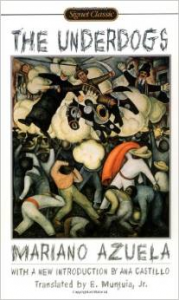This is the seventh and final entry in a series of posts about how a homeschooling student can put together a persuasive college application. In this series, I talk about
• Standardized Tests
• Outside Letter of Reference
• Letter of Reference from a Parent
• Transcripts
• Student essay
• Some general things to keep in mind
Although the previous posts have focused on individual parts of the college application, some general principles stand behind most of what I have said:
• Outside evaluation and opinion are valuable. This is one area where home schoolers often struggle.
• Story and detail are persuasive. This is one area where homeschoolers can have an advantage.
• The different parts of an application packet work together. Think about how an asset in one part can balance out a liability in another.
Now I would like to add another general principle: Be honest. Put your best foot forward, but don’t pretend to be something you’re not.
The college admission committee’s job is not to be a gatekeeper, screening out “imperfect” students; their job is to be a matchmaker, insuring that the right student ends up at the right college and in the best way. Often, though, we as parents prevent the committee from doing its job by failing to disclose our child’s academic weaknesses.
Of course, our temptation as parents is to paint over our child’s weaknesses, but that’s not the problem I have in mind. Instead, I’m thinking about one of home schooling’s great advantages, namely the fact that we as parents can adapt our schooling to fit a child’s needs exactly. As a result, even a child with very unusual academic problems can do well at home—and that’s wonderful! That’s a reason to home school!
But it can lead us into ignoring problems that will become obvious and glaring as soon as the child is thrown into a new setting. Once in a while I read an application that says something like, “Jane did not learn to read until she was fourteen,” and I flinch. Kids learn to read at different ages, but fourteen is late by anyone’s standards: does Jane have a learning disability that will suddenly become an issue when she arrives at college? Here is a sentence I have seen in one form or another many times: “While his poor handwriting and spelling may make writing exasperating, a good laptop with spell check will fix it.” This could be quite normal, or it could be that the laptop is masking dysgraphia and the spell check feature is hiding dyslexia.
We don’t want our kids in the schools where they will be quickly labeled with a “disability,” but on the other hand we shouldn’t let our kids go through life with a genuine but undiagnosed problem. I have seen the suffering this causes: instead of getting off to a good start with a sound strategy in place, the student falls behind his peers and gets into serious academic trouble before anyone realizes there is a problem. His teachers try to help, but they try all the wrong things because they don’t realize how different he is from his classmates. The student feels embarrassed and discouraged.
When the root of the problem is discovered, it’s like day dawning after a long storm. Suddenly the teachers feel empowered to offer help and exceptions to rules that otherwise would have felt unfair; suddenly the student can tap into all the strategies that all the other people with the same problem have discovered; suddenly we are dealing with reality, in the open air, instead of groping in the shadows.
But by this point there are already bad grades on the books. The student has already been through a very stressful year, and he may even have fallen back a year in school. Not knowing about his problem before he left home has caused a lot of unnecessary suffering.
The law does not permit colleges to ask about learning disabilities, because admissions committees are not supposed to discriminate against the applicant on the basis of those kinds of things. But if you figure out why your child is so different from his siblings and voluntarily disclose that in his college application, you will help the admissions committee play its matchmaking role by giving you the most honest judgment possible about whether the program is a good fit and by making sure your child gets the help he needs when he or she arrives.
I hope this blog post series has been helpful to you as you think about preparing your home schooled high schooler for college!
Series Start
 It’s a well-written piece of rhetoric and says a lot of true things. But when you stand back and realize that Zmirak has characterized the people he disagrees with as both Gnostic and suicidal, you might begin to wonder if his rhetoric has gotten off the leash on him.
It’s a well-written piece of rhetoric and says a lot of true things. But when you stand back and realize that Zmirak has characterized the people he disagrees with as both Gnostic and suicidal, you might begin to wonder if his rhetoric has gotten off the leash on him.


